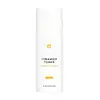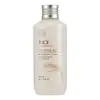What's inside
What's inside
 Key Ingredients
Key Ingredients

 Benefits
Benefits

 Concerns
Concerns

 Ingredients Side-by-side
Ingredients Side-by-side

Water
Skin ConditioningDipropylene Glycol
HumectantGlycerin
HumectantNiacinamide
SmoothingGlycereth-26
HumectantPanthenol
Skin ConditioningMacadamia Ternifolia Seed Oil
EmollientSqualane
EmollientPropanediol
SolventCaprylic/Capric Triglyceride
MaskingCentella Asiatica Extract
CleansingLactobacillus Ferment
Skin ConditioningBrassica Campestris Sterols
EmollientCetearyl Alcohol
EmollientStyrene/Vp Copolymer
Hydrogenated Lecithin
EmulsifyingSodium Hyaluronate
HumectantHydrolyzed Hyaluronic Acid
HumectantHyaluronic Acid
HumectantSodium Hyaluronate Crosspolymer
HumectantHydrolyzed Sodium Hyaluronate
Skin ConditioningPotassium Hyaluronate
Skin ConditioningSodium Acetylated Hyaluronate
HumectantHydroxypropyltrimonium Hyaluronate
Pentylene Glycol
Skin ConditioningFructan
Skin ConditioningPolyglyceryl-10 Oleate
Skin ConditioningAsiaticoside
AntioxidantMadecassoside
AntioxidantMadecassic Acid
Skin ConditioningAsiatic Acid
Skin ConditioningPEG-5 Rapeseed Sterol
CleansingAdenosine
Skin ConditioningCholesterol
EmollientCeteth-3
EmulsifyingCeteth-5
EmulsifyingCeramide NP
Skin ConditioningCeramide Ns
Skin ConditioningCeramide EOP
Skin ConditioningPotassium Cetyl Phosphate
EmulsifyingSh-Oligopeptide-1
Skin ConditioningSh-Polypeptide-1
Skin ConditioningSh-Oligopeptide-2
Skin ConditioningSh-Polypeptide-3
Skin ConditioningDipotassium Glycyrrhizate
HumectantPolyglyceryl-4 Caprate
EmulsifyingHydroxyethyl Acrylate/Sodium Acryloyldimethyl Taurate Copolymer
Emulsion StabilisingAcrylates/C10-30 Alkyl Acrylate Crosspolymer
Emulsion StabilisingTromethamine
BufferingPrunus Amygdalus Amara Kernel Oil
MaskingCamellia Sinensis Leaf Extract
AntimicrobialPyrus Malus Leaf Extract
Skin ConditioningJasminum Officinale Flower Water
MaskingVanilla Planifolia Fruit Extract
Skin Conditioning1,2-Hexanediol
Skin ConditioningCaprylyl Glycol
EmollientEthylhexylglycerin
Skin ConditioningDisodium EDTA
Water, Dipropylene Glycol, Glycerin, Niacinamide, Glycereth-26, Panthenol, Macadamia Ternifolia Seed Oil, Squalane, Propanediol, Caprylic/Capric Triglyceride, Centella Asiatica Extract, Lactobacillus Ferment, Brassica Campestris Sterols, Cetearyl Alcohol, Styrene/Vp Copolymer, Hydrogenated Lecithin, Sodium Hyaluronate, Hydrolyzed Hyaluronic Acid, Hyaluronic Acid, Sodium Hyaluronate Crosspolymer, Hydrolyzed Sodium Hyaluronate, Potassium Hyaluronate, Sodium Acetylated Hyaluronate, Hydroxypropyltrimonium Hyaluronate, Pentylene Glycol, Fructan, Polyglyceryl-10 Oleate, Asiaticoside, Madecassoside, Madecassic Acid, Asiatic Acid, PEG-5 Rapeseed Sterol, Adenosine, Cholesterol, Ceteth-3, Ceteth-5, Ceramide NP, Ceramide Ns, Ceramide EOP, Potassium Cetyl Phosphate, Sh-Oligopeptide-1, Sh-Polypeptide-1, Sh-Oligopeptide-2, Sh-Polypeptide-3, Dipotassium Glycyrrhizate, Polyglyceryl-4 Caprate, Hydroxyethyl Acrylate/Sodium Acryloyldimethyl Taurate Copolymer, Acrylates/C10-30 Alkyl Acrylate Crosspolymer, Tromethamine, Prunus Amygdalus Amara Kernel Oil, Camellia Sinensis Leaf Extract, Pyrus Malus Leaf Extract, Jasminum Officinale Flower Water, Vanilla Planifolia Fruit Extract, 1,2-Hexanediol, Caprylyl Glycol, Ethylhexylglycerin, Disodium EDTA
Water
Skin ConditioningGlycerin
HumectantAlcohol Denat.
AntimicrobialGlycereth-26
HumectantDipropylene Glycol
HumectantPEG-75
Humectant1,2-Hexanediol
Skin ConditioningOryza Sativa Extract
AbsorbentOryza Sativa Bran Oil
EmollientCeramide NP
Skin ConditioningDimethicone
EmollientPEG-60 Hydrogenated Castor Oil
EmulsifyingHydrogenated Lecithin
EmulsifyingAcrylates/C10-30 Alkyl Acrylate Crosspolymer
Emulsion StabilisingSodium Hyaluronate
HumectantCaprylic/Capric Triglyceride
MaskingPolyglyceryl-10 Oleate
Skin ConditioningLecithin
EmollientGlycosphingolipids
EmollientPotassium Hydroxide
BufferingTrisodium EDTA
Phenoxyethanol
PreservativeEthylhexylglycerin
Skin ConditioningParfum
MaskingHydroxycitronellal
PerfumingLinalool
PerfumingWater, Glycerin, Alcohol Denat., Glycereth-26, Dipropylene Glycol, PEG-75, 1,2-Hexanediol, Oryza Sativa Extract, Oryza Sativa Bran Oil, Ceramide NP, Dimethicone, PEG-60 Hydrogenated Castor Oil, Hydrogenated Lecithin, Acrylates/C10-30 Alkyl Acrylate Crosspolymer, Sodium Hyaluronate, Caprylic/Capric Triglyceride, Polyglyceryl-10 Oleate, Lecithin, Glycosphingolipids, Potassium Hydroxide, Trisodium EDTA, Phenoxyethanol, Ethylhexylglycerin, Parfum, Hydroxycitronellal, Linalool
Ingredients Explained
These ingredients are found in both products.
Ingredients higher up in an ingredient list are typically present in a larger amount.
1,2-Hexanediol is a synthetic liquid and another multi-functional powerhouse.
It is a:
- Humectant, drawing moisture into the skin
- Emollient, helping to soften skin
- Solvent, dispersing and stabilizing formulas
- Preservative booster, enhancing the antimicrobial activity of other preservatives
Acrylates/C10-30 Alkyl Acrylate Crosspolymer is a synthetic polymer. It is used to thicken and improve the texture of products. Due to its properties, it can prevent water and oil ingredients from separating.
This ingredient is an emollient, solvent, and texture enhancer. It is considered a skin-softener by helping the skin prevent moisture loss.
It helps thicken a product's formula and makes it easier to spread by dissolving clumping compounds.
Caprylic Triglyceride is made by combining glycerin with coconut oil, forming a clear liquid.
While there is an assumption Caprylic Triglyceride can clog pores due to it being derived from coconut oil, there is no research supporting this.
Learn more about Caprylic/Capric TriglycerideCeramide NP is a type of ceramide and formally known as ceramide 3.
Ceramides are intercellular lipids naturally found in our skin that bonds dead skin cells together to create a barrier. They are known for their ability to hold water and thus are a great ingredient for dry skin.
Ceramides are an important building block for our skin barrier. A stronger barrier helps the skin look more firm and hydrated. By bolstering the skin ceramides act as a barrier against irritating ingredients. This can help with inflammation as well.
If you would like to eat ceramides, sweet potatoes contain a small amount.
Read more about other common types of ceramides here:
Ceramide AP
Ceramide EOP
Dipropylene Glycol is a synthetically created humectant, stabilizer, and solvent.
This ingredient helps:
Dipropylene glycol is technically an alcohol, but it belongs to the glycol family (often considered part of the ‘good’ alcohols). This means it is hydrating and gentle on skin unlike drying solvent alcohols like denatured alcohol.
As a masking agent, Dipropylene Glycol can be used to cover the smell of other ingredients. However, it does not have a scent.
Studies show Dipropylene Glycol is considered safe to use in skincare.
Learn more about Dipropylene GlycolEthylhexylglycerin (we can't pronounce this either) is commonly used as a preservative and skin softener. It is derived from glyceryl.
You might see Ethylhexylglycerin often paired with other preservatives such as phenoxyethanol. Ethylhexylglycerin has been found to increase the effectiveness of these other preservatives.
Glycereth-26 is a synthetic ingredient and polyethylene glycol ether of Glycerin. Glycerin is already naturally found in your skin and helps keep your skin moisturized.
It is a humectant and helps add texture to products. It can make your product thicker.
As a humectant, it helps draw moisture from the air to your skin. This helps your skin stay hydrated.
Learn more about Glycereth-26Glycerin is already naturally found in your skin. It helps moisturize and protect your skin.
A study from 2016 found glycerin to be more effective as a humectant than AHAs and hyaluronic acid.
As a humectant, it helps the skin stay hydrated by pulling moisture to your skin. The low molecular weight of glycerin allows it to pull moisture into the deeper layers of your skin.
Hydrated skin improves your skin barrier; Your skin barrier helps protect against irritants and bacteria.
Glycerin has also been found to have antimicrobial and antiviral properties. Due to these properties, glycerin is often used in wound and burn treatments.
In cosmetics, glycerin is usually derived from plants such as soybean or palm. However, it can also be sourced from animals, such as tallow or animal fat.
This ingredient is organic, colorless, odorless, and non-toxic.
Glycerin is the name for this ingredient in American English. British English uses Glycerol/Glycerine.
Learn more about GlycerinHydrogenated Lecithin is created from the hydrogenation of lecithin (a group of phospholipids). Hydrogenation is a chemical reaction between hydrogen and another element.
This ingredient is an emollient and emulsifier. As an emollient, it helps soften skin by trapping moisture within. As an emulsifier, it prevents oil and water ingredients from separating.
Polyglyceryl-10 Oleate isn't fungal acne safe.
Sodium Hyaluronate is hyaluronic acid's salt form. It is commonly derived from the sodium salt of hyaluronic acid.
Like hyaluronic acid, it is great at holding water and acts as a humectant. This makes it a great skin hydrating ingredient.
Sodium Hyaluronate is naturally occurring in our bodies and is mostly found in eye fluid and joints.
These are some other common types of Hyaluronic Acid:
Learn more about Sodium HyaluronateWater. It's the most common cosmetic ingredient of all. You'll usually see it at the top of ingredient lists, meaning that it makes up the largest part of the product.
So why is it so popular? Water most often acts as a solvent - this means that it helps dissolve other ingredients into the formulation.
You'll also recognize water as that liquid we all need to stay alive. If you see this, drink a glass of water. Stay hydrated!
Learn more about Water